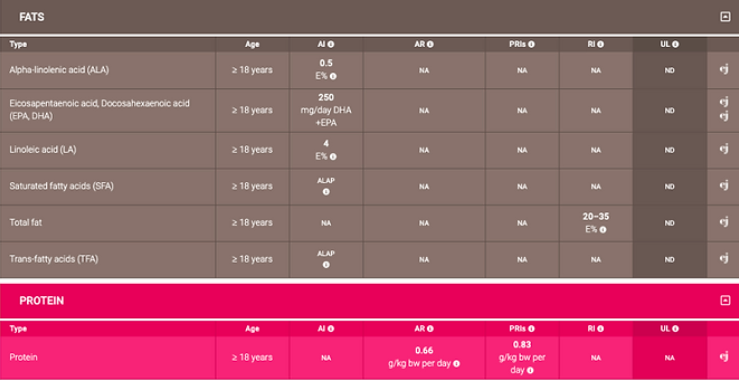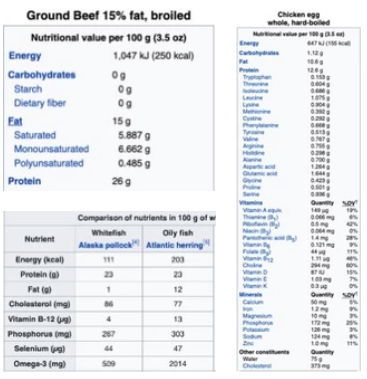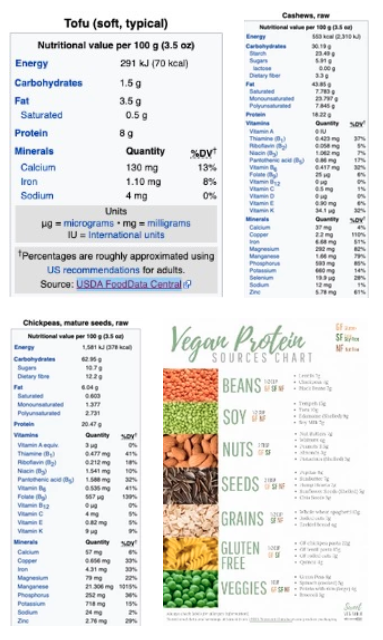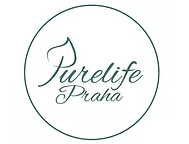THE REPLACEMENT FOR MEAT AND EGGS

pure diet | vegan recipes
Are you afraid of changing to a pure vegan diet?
Are you fed up with plain, unattractive vegetable dishes?
Are you concerned about convincing your family and friends, but don’t know how?
……
This article illustrates some fundamental nutritional knowledge which may be useful for exploring the concept of replacing meat and eggs.
1. DIET: A HABITUAL TENDENCY
I once gathered with some Czech friends for a meal of fried rice. While setting the table, I laid out spoons for them and chopsticks for myself. But my friends wanted forks. They were just as curious as to why I ate rice with chopsticks as I was about why they used forks. Finally, we explained to each other the reasons, and discovered that using either was only a matter of habit.
Changing the diet is like changing a habit. You may feel uncomfortable or unfamiliar with the new plant-based diet in the beginning (being hungry all the time, not knowing what to eat or how to cook, afraid of not having enough nutrients, etc). It’s important to be clear that vegetables are different than meat; we can’t assume that a meat or egg replacement will be exactly the same as eating meat. What helps us persist with following the pure diet are original motivations such as love, health, self-achievement and upgrading.
2. REPLACEMENT BY NUTRITION MOTIVATION
In this section we’ll introduce the concept of DRV, and talk about replacement from the perspective of nutrition.
– WHAT MATTERS MOST IS NOT WHAT WE EAT, BUT WHAT WE DON’T
Thank you for reading.
More information about pure diet can be found on our

pure diet | vegan recipes
DIETARY REFERENCE VALUES—DRV (EU STANDARDS) is the nutritional requirement system used by both the UK Department of Health and the EU’s European Food Safety Authority. You can easily find information about DRV in EU standards by clicking this Wikipedia page.
According to BDA (the Association of UK Dietitians), “plant-based diets rich in beans, nuts, seeds, fruit and vegetables, whole grains such as oats, rice, and cereal-based foods such as breads and pasta can provide all the nutrients needed for good health. This includes essential fats, protein, vitamins, minerals and plenty of fibre.” Therefore, we don’t need to worry about nutritional intake. However, in terms of replacement methods, we still need to find out what nutritional structures meat and egg have.

From the food tables above, we can see the basic nutritional structure of beef, fish and eggs. Simply put, these are mainly combined with fat, protein minerals and vitamins. Compared with the nutritional structure of tofu, chickpeas and cashews, which also have abundant protein and fat, animal products lack essential fibers but are rich in many oppositional elements not needed by the body, such as saturated fats (the DRV suggests as little as possible). It is worth paying attention to the fact that heavy, toxic metals have been highly accumulated in fish.
Generally speaking, if you want to find the nutritional reason for meat and egg replacement, please look for the foods you prefer from sources of vegan protein and vegan fat. As the British Nutrition Foundation advises, “When eating a meal with plant sources of iron such as pulses (kidney beans, chickpeas or lentils), dark green veg or an iron-fortified breakfast cereal, try to include some vitamin C to increase iron absorption. This can be done by adding vegetables such as peppers or broccoli to your meal, or berries to your cereal. “Other sources of vitamin B12, such as vitamin B12 fortified foods or supplements, should also be included.” The British Nutrition Foundation also lists some other means of B12 intake: “Vitamin B-12 fortified yeast extract such as Vitamin B12 fortified breakfast cereals (with added vitamin B12) and Vitamin B12 fortified dairy-free alternatives (such as soya, oat and nut dairy-free alternative drinks or vegan spreads).”
In conclusion, we tend to use beans, soya products and nuts to replace meat and eggs, as they have similar nutritional forms.

Thank you for reading!
Purelife Praha
Source:
https//efsa.gitlab.io/multimedia/drvs/index.htm?lang=en
https://www.efsa.europa.eu/en/interactive-pages/drvs
https://en.wikipedia.org/wiki/Dietary_Reference_Values#:~:text=Dietary%20Reference%20Values%20(DRV)%20is,s%20European%20Food%20Safety%20Authority.&text=The%20DRVs%20can%20be%20divided,the%20population’s%20requirement%20is%20met)
https://www.bda.uk.com/food-health/food-facts.html#:~:text=Our%20Food%20Fact%20Sheets%20are,advice%20given%20by%20a%20dietitian.
https://en.wikipedia.org/wiki/Beef#Nutrition_and_health
https://en.wikipedia.org/wiki/Fish_as_food#Nutritional_value
https://en.wikipedia.org/wiki/Egg_as_food#Nutrition
https://en.wikipedia.org/wiki/Tofu#Nutrition_and_health
https://en.wikipedia.org/wiki/Chickpea#Nutrition
https://en.wikipedia.org/wiki/Cashew#Nutrition
https://sweetvegtable.com/vegan-protein-sources-chart/
https://www.care2.com/
https://www.nutrition.org.uk/index.php?option=com_content&view=article&id=725:vegan-and-vegetarian-sp-446&catid=63&Itemid=480&showall=1&limitstart=
https://www.nutrition.org.uk/healthyliving/helpingyoueatwell/veganandvegetarian.html?limit=1&start=14
